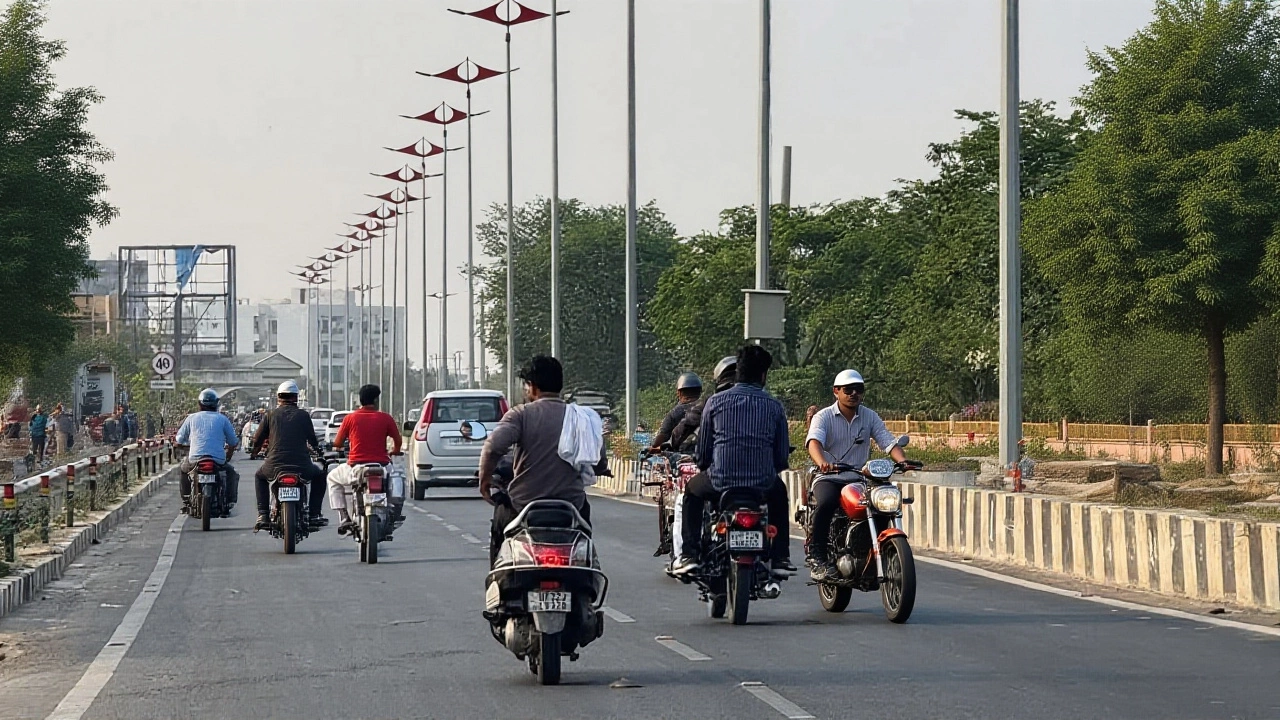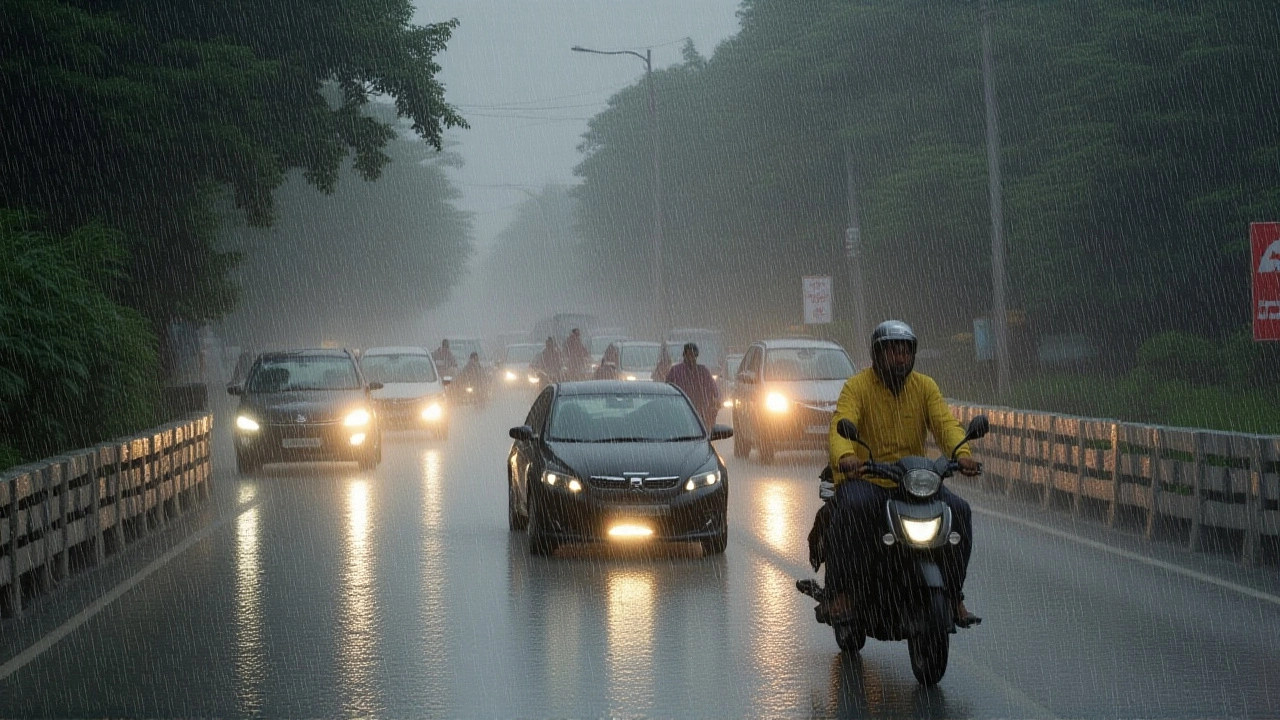When India Meteorological Department (IMD) declared the southwest monsoon’s retreat from the national capital on September 24, 2025, the city was still bracing for a deluge. That same day marked the earliest withdrawal in more than two decades, and within a week Delhi recorded October’s heaviest rain, a wet spell that is already washing the city’s smog away.
Monsoon Withdrawal Timeline
The IMD’s bulletin on September 25 traced the retreat line across a string of coordinates – from 37.5°N/73°E near Rampur Bushahr down through Haridwar, Muradabad, Etawah, Banswara, Vallabh Vidyanagar, and finally Veraval at 20.5°N/69°E. In addition to Punjab and Haryana, the monsoon’s edge slipped past parts of Gujarat and Rajasthan, leaving a patchwork of wet and dry zones across north‑central India.
Historically, the capital’s monsoon exits in late September. The 2002 record, when the rains pulled out on September 20, still stands as the benchmark. Last year’s retreat arrived on October 2, making the 2025 timing a striking outlier.
Rainfall Surge in Delhi
On October 3, Delhi’s weather stations posted a sudden spike: Palam measured 21.8 mm, Lodhi Road 29.8 mm, the Ridge 52.9 mm, Ayanagar a whopping 72.6 mm, Raj Ghat 40.5 mm, Pusa 36 mm, and Mayur Vihar 35 mm. The cumulative total topped the city’s average October precipitation in a single day, prompting the IMD to label the event ‘excess’ rainfall.
Explaining the physics, Krishna Mishra, senior scientist at the IMD, told reporters that moisture was being sucked from both the Arabian Sea and the Bay of Bengal. ‘A well‑marked low‑pressure system lingering over the Gulf of Kutch is funneling humid air eastward,’ she said, ‘while a parallel trough stretches from that low into southeast Uttar Pradesh, and another drifts towards northwest Rajasthan in the lower troposphere.’
The forecast for the capital remains a wash‑out‑by‑rain scenario. Light showers are expected on Wednesday, a couple of very light spells on Thursday, and another brief shower on October 6. Even if the skies clear, lingering cloud cover will keep daytime temperatures a shade above normal, offering a humid but bearable early‑winter feel.
Mumbai’s Ongoing Showers
Down South, Mumbai is still under a rainy blanket. The IMD predicts rain and clouds to linger until October 6, with the monsoon not fully withdrawing from the city until after October 5. Residents can expect intermittent downpours, especially in the suburbs, while the western coast continues to wrestle with moisture surges from the Arabian Sea.
Despite the inconvenience, the persistent clouds are a boon for the city’s water reservoirs, which have been hovering near critical levels since the 2023 drought. Officials say the extended rain window could lift storage to 78 % of total capacity by the end of the month.
Regional Weather Outlook
Beyond the capitals, the extended forecast (Sept 25 – Oct 8) paints a mixed picture. Northwest plains, central India, and the east‑northeast belt are all slated for above‑normal rainfall, while much of the peninsular interior stays near normal. In the hill states, Uttarakhand’s Kumaon and Garhwal zones will see light‑to‑moderate rain with occasional thunderstorms at altitude. Himachal’s upper reaches may get a few showers, but lower valleys should stay dry.
Tourist hotspots such as Mussoorie, Nainital, Shimla, and Manali are expected to enjoy mostly clear mornings, with evening showers providing a “refreshing” finish—perfect for those looking to escape the city heat.
Air Quality Impact and Tourist Outlook
Delhi’s Air Quality Early Warning System recorded a sharp drop in particulate matter following the October 3 downpour. The AQI, which had lingered in the ‘poor’ bracket for weeks, is projected to slide into the ‘satisfactory’ category by mid‑week, a change the city’s health officials welcome.
“Rain is the most effective natural scrubber we have,” said Dr. Ayesha Khan, an environmental scientist at the National Centre for Atmospheric Research. “The washout not only reduces PM2.5 but also curbs ground‑level ozone, which together improve respiratory health outcomes.”
For travelers, the cleaner air coupled with cooler evenings makes the short‑term outlook favorable. However, the lingering cloud cover means night temperatures could dip to the low teens in the plains, so packing layers is advised.
Key Facts
- Monsoon officially withdrew from Delhi on September 24, 2025 – the earliest since 2002.
- On October 3, rainfall at Ayanagar reached 72.6 mm, exceeding the city’s monthly average in a single day.
- Krishna Mishra linked the excess rain to twin moisture streams from the Arabian Sea and Bay of Bengal.
- Mumbai will stay rainy until at least October 6, with full monsoon retreat expected after October 5.
- Delhi’s AQI is set to improve from ‘poor’ to ‘satisfactory’ by Wednesday, thanks to the rain‑induced washout.

Frequently Asked Questions
Why did the monsoon withdraw from Delhi earlier than usual?
The IMD’s data showed a rapid north‑westward shift of the low‑pressure system over the Gulf of Kutch, which pulled moist air away from the capital faster than the typical September‑October transition. This shift, combined with cooler upper‑level winds, accelerated the retreat, making September 24 the earliest exit since records began in 1901.
How is the heavy rain expected to affect Delhi’s air quality?
Rain acts as a natural scrubber, removing particulate matter from the lower atmosphere. The October 3 downpour is projected to cut PM2.5 levels by roughly 40 %, moving the AQI from the ‘poor’ range (151‑200) into the ‘satisfactory’ bracket (0‑50) by mid‑week, according to the Centre’s Air Quality Early Warning System.
Will Mumbai experience any relief before the monsoon fully retreats?
The forecast calls for intermittent showers and overcast skies through October 6. While the rains will ease the city’s humidity spikes, full clearance isn’t expected until after October 5, when the IMD predicts the monsoon’s final withdrawal from the western coast.
What does the extended rainy period mean for agriculture in north‑central India?
Above‑normal rainfall across Punjab, Haryana, and Uttar Pradesh should bolster wheat and mustard seedling growth, reducing reliance on supplemental irrigation. However, farmers in flood‑prone belts of Rajasthan must stay vigilant for water‑logging, which could harm early‑season crops.
How should tourists adjust their plans when visiting hill stations during this period?
Visitors to Mussoorie, Nainital, Shimla, or Manali can expect clear mornings but should pack rain gear for possible evening showers. The intermittent rain often brings cooler temperatures, making daytime hikes comfortable while evening bonfires remain enjoyable.

